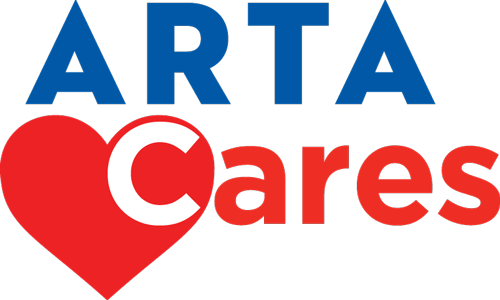Medical Cannabis: Strains and Doses

Cannabis is a plant that has been used by humans for centuries to provide nourishment (such as hemp hearts), creates materials (paper, cloth), and as a religious, recreational, and medicinal drug. In Canada, physicians are able to prescribe different strains of cannabis for various medical conditions, and anyone over the age of 18 can purchase it for recreational use. Although research on this drug is still in progress, significant evidence suggests that cannabis is an effective treatment for pain related to arthritis, cancer, neuropathy, and more. It may also be an effective treatment for anxiety, depression, OCD, and panic attacks by increasing the amount of serotonin in the brain. Some research also suggests that THC in cannabis can help slow the advancement of Alzheimer’s disease by decreasing beta-amyloid protein buildup in the brain.
Many Canadians are seeking prescriptions for cannabis to treat pain and have also started self-medicating by frequenting government-regulated dispensaries. Regardless of an individual’s reason for using cannabis, it is essential to consider the facts before consumption.
The two active components of cannabis are tetrahydrocannabinol (THC) and cannabidiol (CBD). The amount of each of these substances varies with each strain of cannabis. The main strains are Sativa, Indica, and Ruderalis, which can be pure or hybridized varieties. Each variety is identified by a name, often chosen by the grower. An example is Charlotte’s Web, which is a variety named for the young girl with a rare seizure disorder that it was grown for. Most strains have a mix of THC and CBD. THC causes the psychoactive effects of cannabis and CBD causes anti-inflammatory and anti-anxiety effects. Cannabis strains with higher concentrations of CBD are most effective for pain relief due to its natural analgesic and anti-inflammatory properties. The effects of cannabis vary according to dose, strain, individual biology, tolerance, medical condition, and use of other medications.
Cannabis may have an “opioid-sparing effect,” which means that individuals who regularly use opioids like Oxycodone see pain relief with significantly lower doses when also using cannabis. The anti-inflammatory properties of cannabis may be more potent than steroids and non-steroidal anti-inflammatory drugs like Advil. Cannabis not only successfully provides pain relief, but can also help reduce unpleasant effects associated with pain, such as depression, anxiety, insomnia, and loss of appetite.
There are many ways to use cannabis; most common are inhalation and ingestion. Inhaling the drug by smoking or vaporizing has an onset of just a few minutes and lasts three to four hours depending on the dose. Smoking and vaporizing are not risk-free — they can cause irritation to the lungs. Smoking marijuana is associated with cough, chronic bronchitis, low blood oxygen, and chronic lung disease, similar to the effects of tobacco smoke, even in the short term. Vaporizing is thought to be safer as marijuana is heated to lower temperatures and therefore does not release combustion materials into the lungs. However, there is little evidence in this regard.
Other forms of cannabis include extracts, edibles, and topical solutions. Topical solutions can relieve pain to areas on which they are applied and are accessible only with a prescription. It is advised to take very little if trying edibles for the first time, as the onset is anywhere from one to five hours, and lasts up to eight hours. Capsules or pills are similar in their onset and duration.
The forms of cannabis that are available for legal purchase in Canada are fresh or dried flowers, oil, plants, and seeds. Dried flowers are most often smoked or vaporized. Oils are another common way for people to use cannabis, without risk to the lungs. Oil droplets are placed under the tongue to let the blood vessels absorb the drug. The effects tend to be less immediate, at thirty minutes to two hours and can last six or more hours.
Cannabis use causes symptoms that may mimic alcohol intoxication: impaired motor skills, reaction time, decision-making, and concentration. People may feel euphoric and have lowered inhibitions. Hallucinations and confusion can occur. Using too much cannabis can cause symptoms like rapid heart rate, nausea, vomiting, dizziness, muscle spasms, seizures, excessive sleepiness, anxiety, panic, and confusion. Overdose most often occurs with the ingestion of cannabis through edibles or when mixed with other drugs like alcohol, gabapentin, morphine, codeine, antidepressants, or anti-anxiety medications like Valium.
Long-term heavy cannabis use may worsen depression and anxiety or result in increased tolerance to the beneficial effects of cannabis. Larger doses may become necessary to achieve the same therapeutic effects and can have significant financial costs. Heavy cannabis use can cause nausea and vomiting, called cannabinoid hyperemesis syndrome, which is very difficult to treat.
This usually occurs in individuals who use cannabis long term, with heavy use every day.
The potential health impacts and risks associated with cannabis use have not been exhaustively researched. It is best to approach your family physician with any specific questions about your personal use of cannabis for pain management. In fact, if you and your doctor believe this would be a good option for you, your physician may send you to a specialized cannabis clinic with health care practitioners that are trained to assess and treat people with the proper strains and dosing. It is also possible to self refer for an evaluation. With a prescription, you will have access to licensed producers of medical cannabis, which can be reviewed at the Government of Canada site for licensed cultivators, processors, and sellers of cannabis under the Cannabis Act (bit.ly/2Pi6Kuk). More information can be found at the links below. For more information on medical conditions, mental health, and wellness, see HumanaCare’s “your eldercare portal” at ec.myworklifeportal.com.
References
Canadian Nurses Association “Harm reduction for non-medical cannabis use”
Aphria’s (commercial medical cannabis producer) “Cannabis Oil Guide for Health Professionals”
National [U.S.] Council for Aging Care’s “The Complete Guide to Medical Marijuana for Seniors”
Government of Alberta’s “Cannabis Legalization in Canada” webpage
By Hailie Rondeau, RN and Rachel Hughes, RN

ARTACares is provided by HumanaCare, an Alberta-based health and wellness provider with more than thirty-five years of Canadian health care experience.
